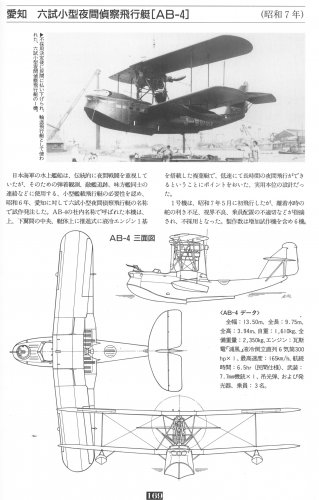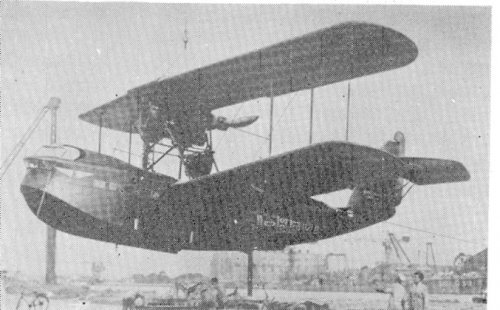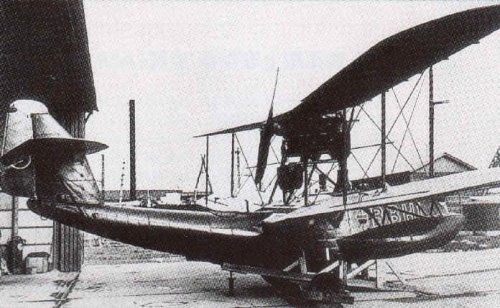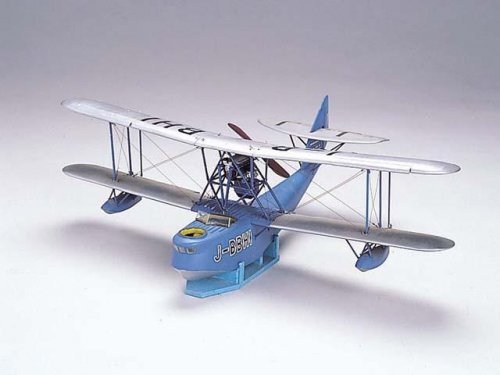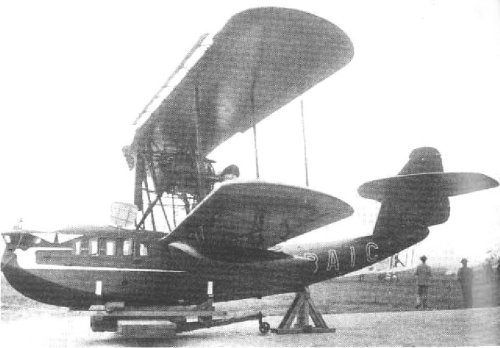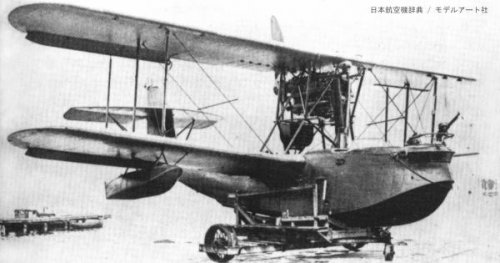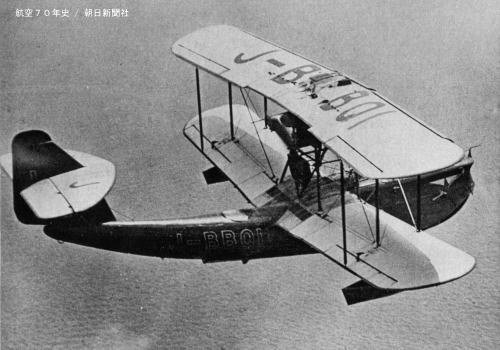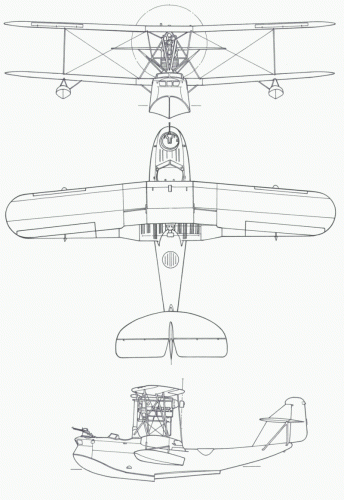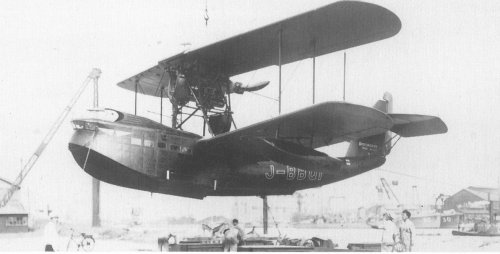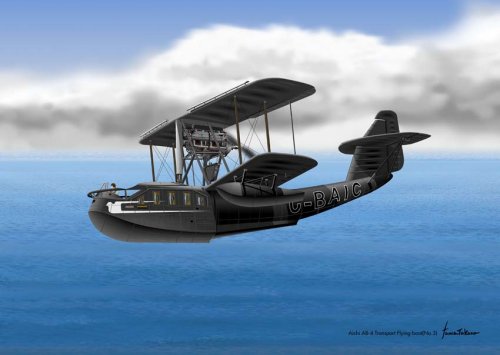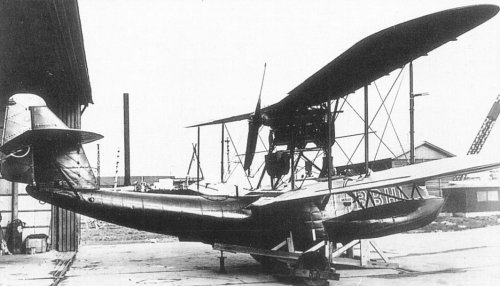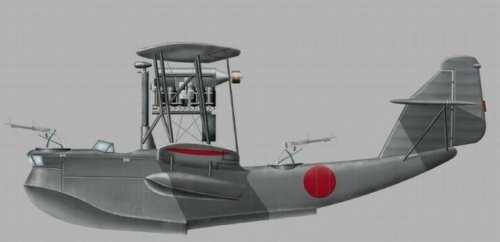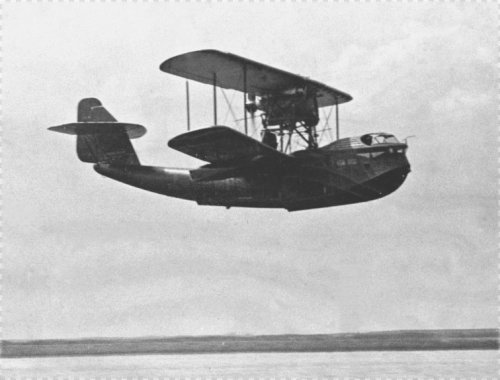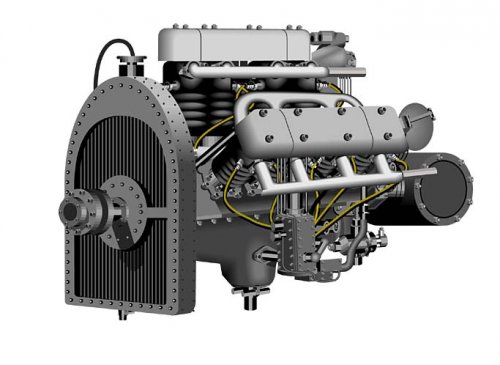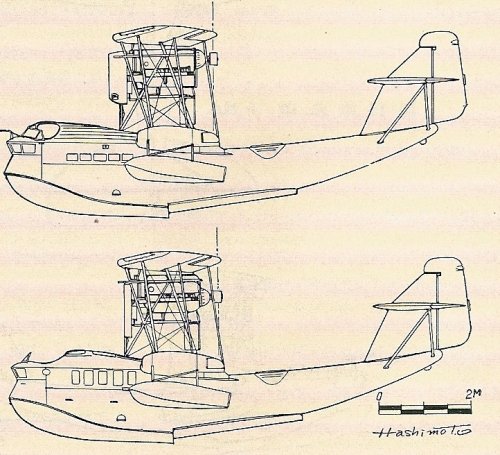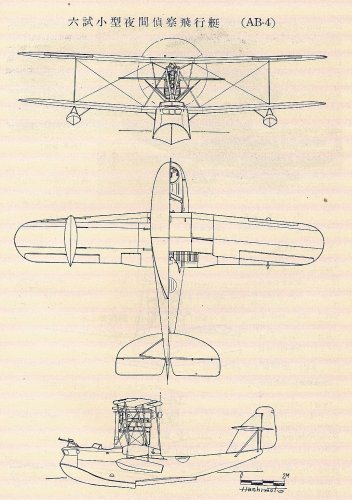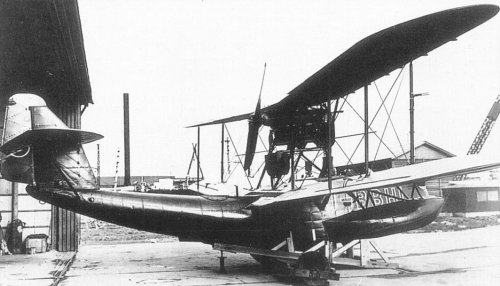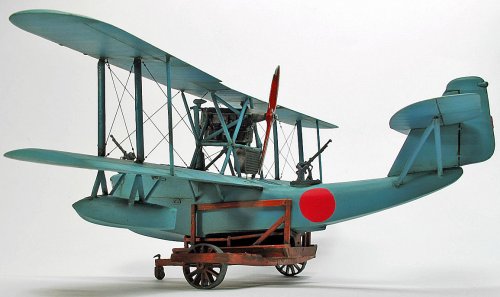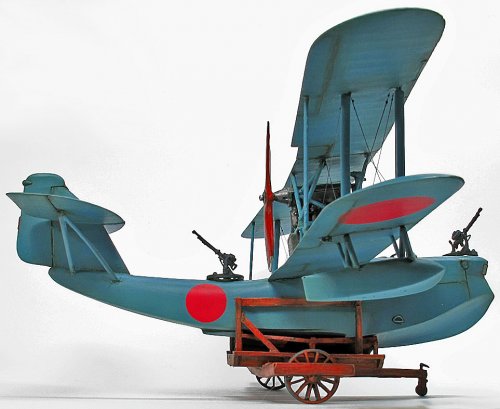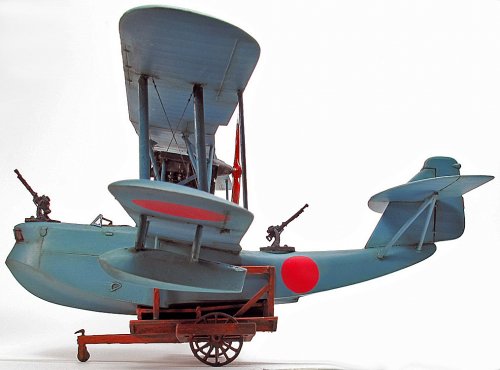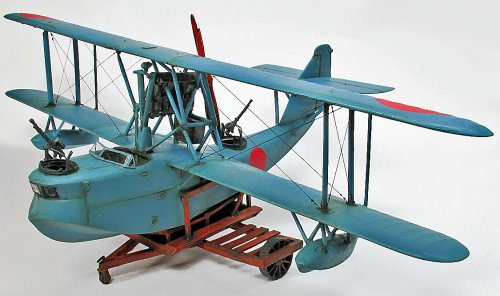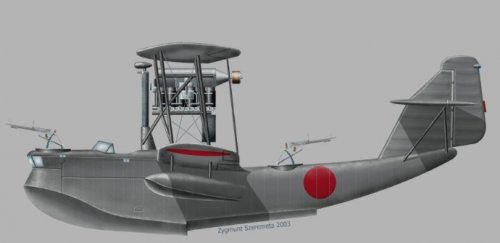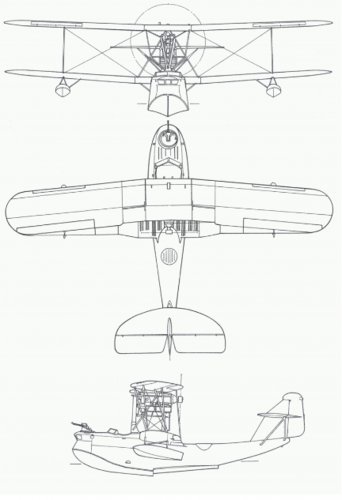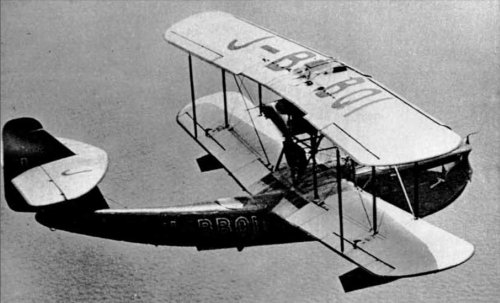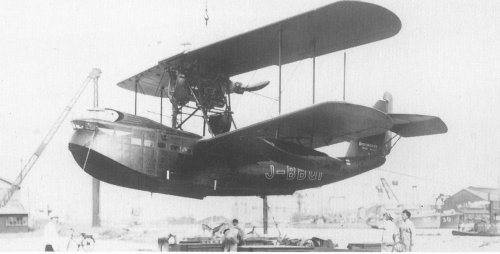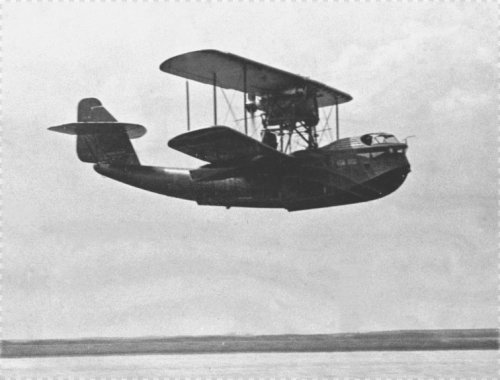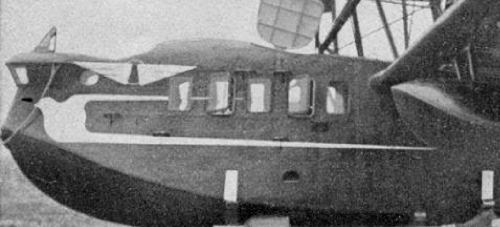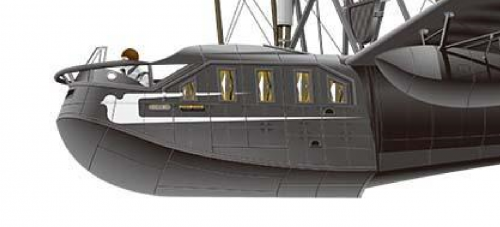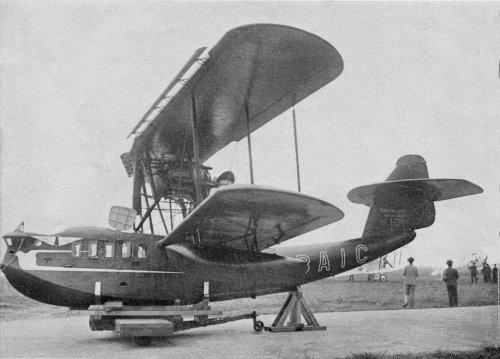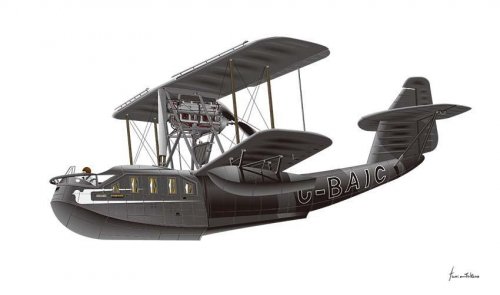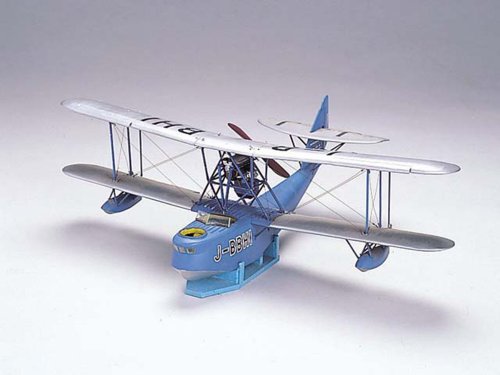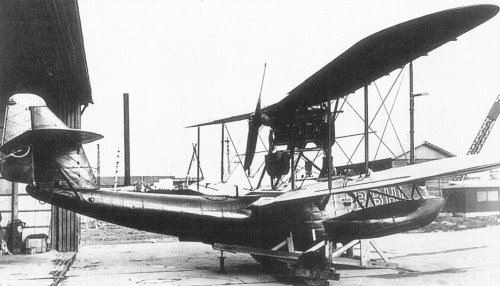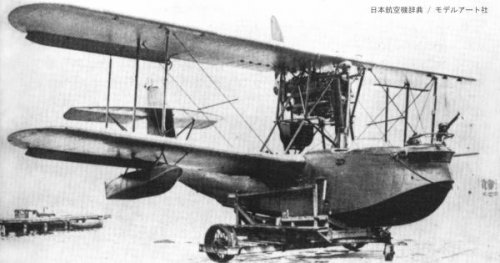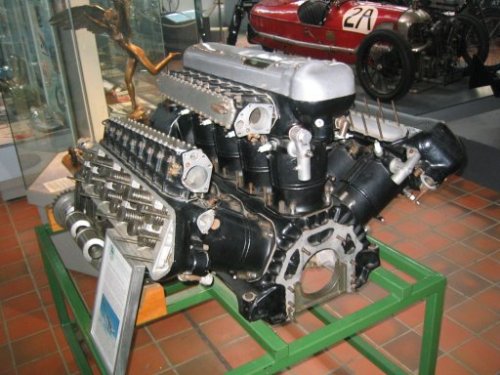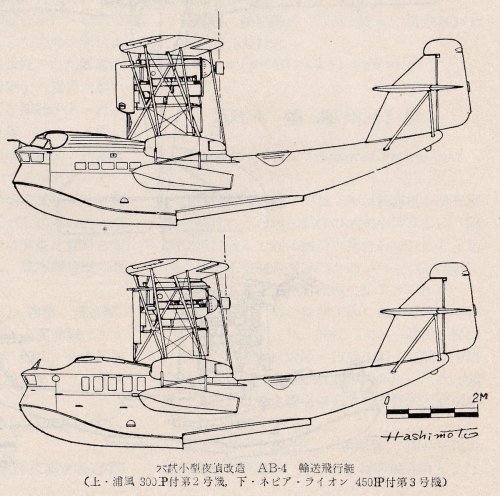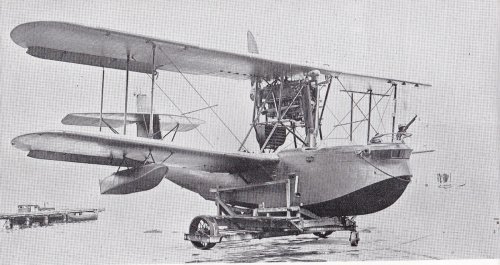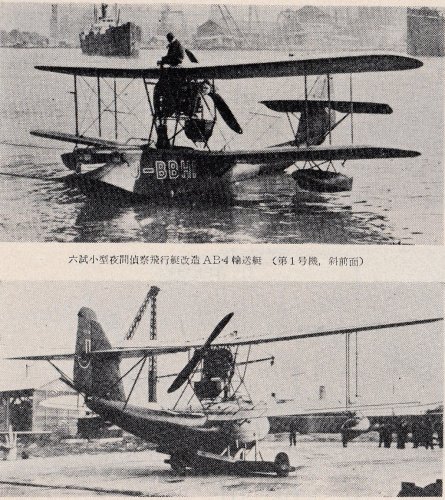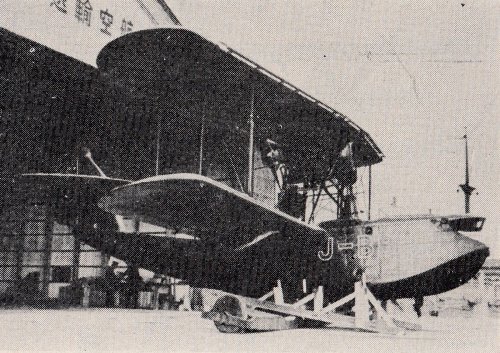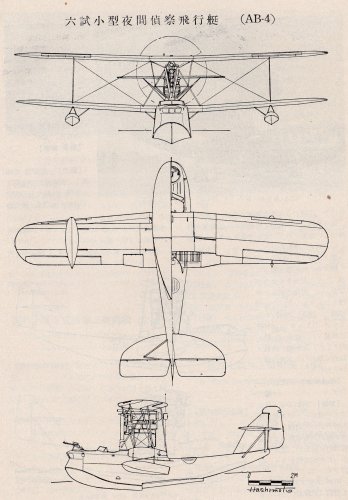Aichi 6-shi small night reconnaissance flying boat or Aichi AB-4 flying boat was a flying boat of the single-engine biplane built in the 1930s. It was developed as a flying boat for reconnaissance in the night with the duty of the spot, enemy ship tailing, and connection in the night for the IJN.
In 1931, the IJN ordered the Aichi Electric Watch Making Co. Ltd. (former of Aichi aircraft) which was manufacturing the naval aircraft from the 1920s to perform the design of a small night reconnaissance flying boat which carried out catapult ejection.
AB-4 flying boat (AB is an abbreviated name of Aichi Biplane) was a biplane with the flying-boat hull of metal structure, and has pusher type propeller.
The engine was a 6-cylinder air cooling in-line engine “Urakaze(浦風 : The wind which blows the beach.)” made by the Tokyo Gas electrical industries.
The first flight of the first experimental model was carried out in May, 1932.
Although maneuverability drivability was generally good, the maneuverability drivability at the time of take off and water landing had a fault, and although the pilot's visibility was low, five sets of additional experimental models were manufactured for evaluation.
Since the main duties were reconnaissance at night, it did not adhere to speed so much, but was developed with emphasis on good maneuverability drivability, wave resistant character when running on the water, a big cruising range, etc.
Furthermore, in order to obtain the more stable low-velocity performance from performing take off and landing at night, stalling speed was decreased by adopting the wings which have a slot in the front of wings, and water-landing speed of 70 km/h was obtained.
The fuselage structure of this flying boat was all metal framework covered with metal plate, the wing structure of this small flying boat was metal framework covered with cloth.
Although six sets of experimental models were examined as the 6-shi small night reconnaissance flying boat , it was not adopted, but the demand was improved and the 96 type reconnaissance sea plane which the same Aichi manufactured was adopted in 1936.
Three of six sets of AB-4 flying boats were sold off to the Japan Airlines transportation research institute in 1935.
No. 1 was used as a cargo airplane, and No. 2 and No. 3 were converted into the flying boat for passengers in Japan Aircraft Mfg., and mainly played an active part in the Inland Sea of Japan air route or the sight-seeing flight.
No. 1 was named the "Kuroshio go (Japan Current go)."
The form of the Kuroshio-go was almost close to the original form, and reconnaissance member/gunner seat located at the front end of the aircraft remained as it was, and the cockpit was located in the middle of the fuselage. This layout was usual for military biplane flying boat at the day, but the field of view at the time of take off and landing was very bad. The color of this aircraft was black because this aircraft was planned to use as a night reconnaissance flying boat at the beginning.
The cockpit of the No.2 aircraft was moved to the front seat which used to be a reconnaissance member seat for the purpose of securing a field of view for operation, and added the cabin which accommodated 5 to 6 passengers.
No. 2 aircraft was named "Urakaze go."
The engine of No. 2 aircraft was replaced to high-output Napier lion engine.
No. 3 aircraft also established the cockpit in the front seat which is a reconnaissance member seat, and the window for passengers was enlarged.
One set of this aircraft collided with the chimney of the factory on May 27, 1937, and it sacrificed five victims.
Crew member : one person, Passenger : 5 to 6 persons, Size : 14.00 m in full width, 9.70 m in full length
Empty weight : 1770 kg of prudence, The gross weight : 2550 kg, Payload : 780 kg
Engine = Gasden 6 cylinders inverse inline liquid cooling engine / 330hp
From No.2 aircraft : Napier lion liquid cooling W shape 12 cylinders / 450hp
Maximum Speed : 155 km/h, Cruising speed : 130 km/h, water landing speed : 70km/h, Endurance : 6.5h

